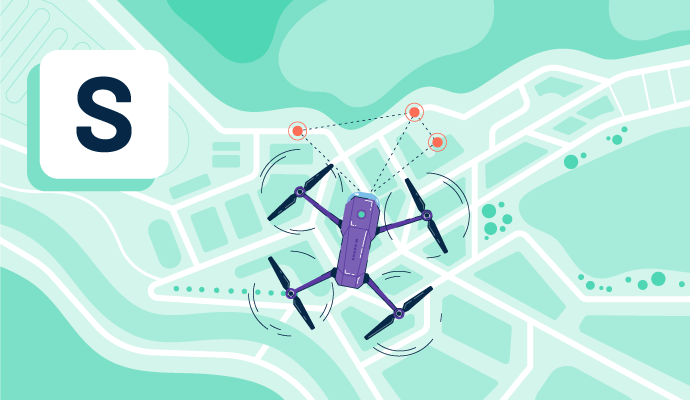What is site selection?
Site selection is a comprehensive process that uses research and analysis to choose the best location for a company. A team investigates all aspects of a potential site, including geospatial attributes, population information, existing infrastructure, and investment.
Whether a company is sourcing its next headquarters, warehouse, or retail location, site selection affects the availability of labor force, revenue, and costs. Some companies invest more time and money in site selection than others, depending on their size, type, and willingness to assume risk.
Geographic information system (GIS) software can help organizations analyze geographical data during the site selection process. Similarly, location intelligence software provides location analytics, which helps users visualize and understand spatial data.
Types of site selection
When selecting a site, companies must understand a property’s purpose. In the business world, there are five different types of site selection. Each one has unique goals and needs.
- Corporate: A corporate headquarters or office building is often located in a thriving community with access to highly trained employees.
- Manufacturing: Manufacturers must adhere to zoning laws in industrial areas. From the sites available, companies should consider which one offers the best access to workers, transportation, and materials.
- Wholesale: While zoning is also a consideration here, a wholesale business should focus on infrastructure and transportation. A potential site has to provide ease of access when shipping and receiving goods.
- Retail: Since retail-based companies sell to customers, demographic information is key when sourcing properties. Competitors’ locations are also very important.
- Service: Like retail businesses, many service-based companies, such as dry cleaners, nail salons, and yoga studios, also seek locations in high-density areas. Service businesses often gain customers who find it convenient to combine errands.
Basic elements of site selection
Site selection is complex. Sometimes large corporations even hire teams of outside consultants to advise them throughout the process. No matter the size of the organization, a site selection process typically includes the following basic elements:
- Location: Everything revolves around the business location. Where will the new site be? Urban, suburban, rural? Corner of a block or the middle of a strip mall? The company also has to decide whether to purchase the land and build or whether to buy an existing facility and remodel it.
- Costs: The initial investment and continuing repairs and future renovations are both important factors. Companies need to think about the cost to buy, build, and maintain, as well as pay for utilities and other necessary expenses.
- Demographics: For retail and service-based businesses, demographics become especially important. Brick-and-mortar stores that rely on foot traffic, like florists or ice cream shops, need to collect and analyze data to ensure that the potential site is convenient to locals.
- Workforce: Employees want to work at a location they consider convenient. The site selection process involves analyzing potential workforce availability. If a company specializes in welding, it doesn’t do any good to build in a remote location an hour away from the closest labor.
- Infrastructure: Raw materials in. Products out. It sounds simple, but for this to work, an infrastructure is needed. If a company builds on a brand-new lot, infrastructure may have to be designed and built. If a company starts with an existing site or facility, they have to figure out whether the current infrastructure is adequate.
- Environment: Depending on the local, state, or country laws , certain environmental requirements might exist. For example, a company might need to order a wetland study or geotechnical review to build on a piece of property.
- Traffic: The site selection process sometimes includes a traffic study. A business can find out whether more cars pass by one side of the road versus the other in the evening or the morning. A coffee shop, for instance, might want to choose the side with more morning traffic.
Benefits of site selection
When done well, site selection has short-term and long-lasting advantages. Some of these benefits include:
- Easier recruitment. The right location is well-situated for the types of employees the company hopes to attract. Whether near a college campus or conveniently on a bus route, the right location removes barriers for workers.
- Better growth. Site selection provides the space for potential physical expansion, and it can also allow for revenue growth. A prime location can lead to increased brand exposure, added customers, and increased sales volume.
- Cost-reduction. Choosing a location carefully can lead to lower costs in taxes, utilities, remodeling, and rent. Over time, a business can save thousands – or hundreds of thousands of dollars – by making a wise initial selection.
Site selection best practices
Without proper guidance, site selection becomes an overwhelming and stressful process. When choosing the next location for an organization, keep the following tips in mind for optimal success:
- Assemble a team. The process takes time and the stakes are high. Build a team of trusted members from various departments. Because this is a high-stakes decision, bring in a consultant if the team needs more expertise.
- Decide on main goals and priorities. Collectively decide on the main purposes of this new site. How will it function? What does the company want to achieve? How much is set aside in the budget?
- Collect, compile, and analyze data. Collect as many layers and facets of data for analysis. This is where software comes in handy for helping the team organize and visualize the data points, leading the company toward a decision.

Kelly Fiorini
Kelly Fiorini is a freelance writer for G2. After ten years as a teacher, Kelly now creates content for mostly B2B SaaS clients. In her free time, she’s usually reading, spilling coffee, walking her dogs, and trying to keep her plants alive. Kelly received her Bachelor of Arts in English from the University of Notre Dame and her Master of Arts in Teaching from the University of Louisville.



















